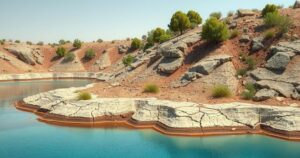Study Confirms Iran Earthquake Was Natural, Not Nuclear Test

A study confirms that the 4.5-magnitude earthquake in Iran was not a nuclear test, dispelling widespread claims fueled by social media during October 2024. The research led by Dr. Benjamin Fernando of Johns Hopkins University utilized seismic data to ascertain the natural origins of the quake, emphasizing the need for accurate scientific communication in times of international tension.
Recent research has clarified that a 4.5-magnitude earthquake in Iran was not the result of a nuclear test, contrary to widespread claims. During the heightened tensions in October 2024, uncertainties surrounding the event spurred social media discussions suggesting illicit activities by the Iranian government. The American-led study, which appears in the journal Seismica, emphasizes the risks of misinterpreting scientific data amid international crises.
Dr. Benjamin Fernando, the study’s leader and a seismologist at Johns Hopkins University, noted a deliberate misinformation campaign that framed the earthquake as a nuclear test, which is rarely associated with seismic events. He highlighted the significance of geophysical data during geopolitical tensions while discrediting the notion that the quake was of anthropogenic origin.
On October 5, 2024, the earthquake struck near Semnan, Iran, an area recognized for its seismic activity, situated approximately 30 miles away. The research analyzed seismic signals and confirmed the natural origins of the event, identifying typical seismic patterns resulting from tectonic adjustments due to the collision of the Arabian and Eurasian plates.
Dr. Fernando explained that seismic waves reveal details about their sources. In this instance, the earthquake came from a reverse fault, a characteristic motion of crustal compression, distinctly different from the explosive waves produced by nuclear tests. Historical data reaffirm this finding, with past earthquakes of similar magnitude and characteristics in the region indicating natural causes.
Notably, social media narratives claiming a nuclear test emerged shortly after the earthquake, with the first such post arising merely 27 minutes post-event. Initial misinterpretations of seismic data quickly morphed into misinformation, while some posts attempted to misassociate it with a separate incident in Armenia. Additionally, conspiracy theories attempted to link the Iranian earthquake with an unrelated event in Israel.
While the research team could not ascertain intentional disinformation, the noted engagement patterns indicated that some individuals with expertise in seismology likely influenced the discourse. Reports highlighted that some of the most viral posts were connected to Russian-backed disinformation initiatives. The false narrative swiftly spread from social media into international news coverage, with misinformation being particularly rampant in Indian media, which often echoed each other’s erroneous claims.
The researchers urge the establishment of collaborations among seismologists for rapid responses to dispel misleading interpretations of seismic data and counter misinformation effectively. Dr. Saman Karimi, a co-author of the study, emphasized the need for scientific organizations to publish timely reports to combat disinformation, proposing partnerships with social media platforms to promote accurate scientific narratives.
The coverage of the recent earthquake in Iran has been overshadowed by claims suggesting it was a nuclear test. Given the geopolitical tensions in the Middle East, discerning accurate information from misinformation became imperative during this period. The importance of scientific accuracy in such events cannot be overstated, as misinterpretations can escalate international crises and influence public perception.
In conclusion, the research firmly establishes that the earthquake in Iran was a natural geological occurrence and not a result of a nuclear test. This emphasizes the critical nature of reliable scientific communication, particularly during times of heightened geopolitical tension. Efforts must be made to quickly address and correct misinformation to prevent the distortion of important scientific facts that can have far-reaching implications.
Original Source: www.wfxg.com






